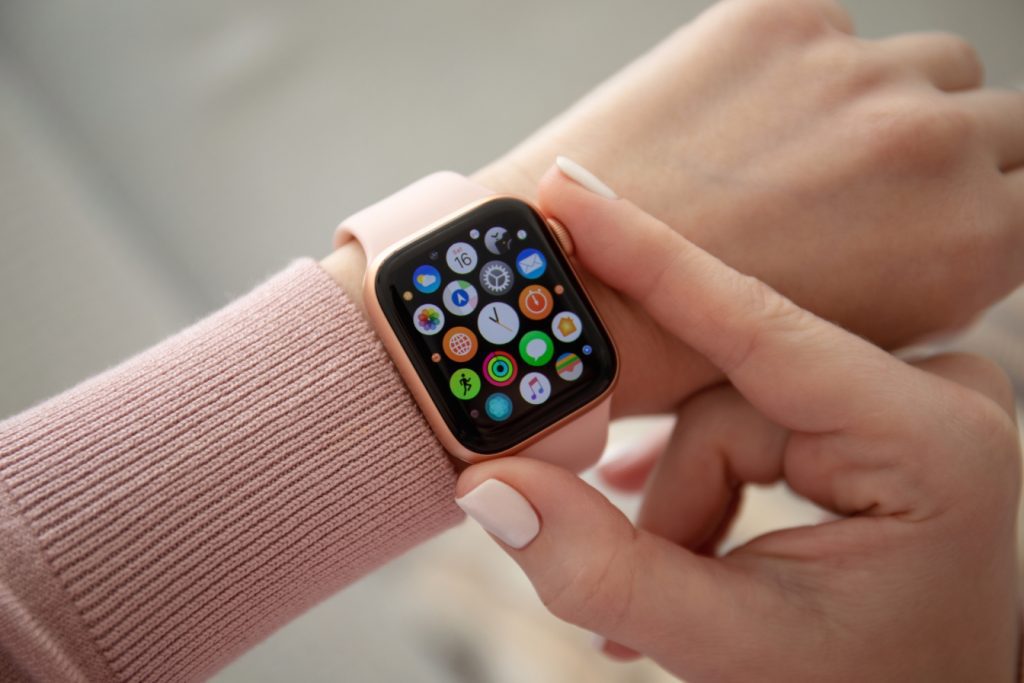Are you the proud owner of an Apple Watch, and want to know when the best times are to charge it?
In order to preserve the battery and extend its lifespan as long as possible, it actually helps to know a little bit about how and when it should be charged.
By doing this, you can keep the battery lasting as long as possible, and enjoy your Apple Watch for many years to come!
When Should You Charge Your Apple Watch?

Generally speaking, you want to charge your Apple Watch during periods of the day when you can leave it off for 30-90 minutes at a time.
Some examples may include shortly after you wake up while you take a shower and eat breakfast, or after you’ve settled down for the night before going to sleep.
While it’s easy enough to simply plug your Apple Watch in before falling asleep each night, this actually isn’t ideal for the lifespan of the battery.
While Apple has safety measures in place to preserve the battery’s health, it’s best to avoid leaving devices using lithium-ion batteries plugged in for excessive periods of time – especially considering how quickly the Apple Watch charges!
How Often Should You Charge Your Apple Watch?
Because it’s best to avoid long charging cycles as well as overcharging your battery, we recommend charging your Apple Watch 1-2 times a day, depending on your usage.
Of course, if you don’t use your Apple Watch frequently or only wear it when you go out, it’s perfectly fine to charge it even less frequently than that. The battery itself does not drain very quickly when the screen isn’t on, so many people are able to get away with charging it every 2-3 days, or even less!
The important thing to keep in mind is the total battery percentage. If you believe that your Apple Watch battery will soon drop below 20 or 25%, it’s probably a good idea to give it a charge.
Letting the battery drop too low can put stress on the battery, shortening its lifespan.
Is It Safe To Let Your Apple Watch Battery Hit Zero?
Let’s say you forgot to plug your Apple Watch in, and you know that it’s going to hit 0% before you’ll have a chance to charge it. Is this something to worry about?
Thankfully, the answer is no.
While it’s not ideal to let your device hit 0% battery, it should be noted that the actual battery will never be fully depleted. This is by design, as it helps protect the lifespan of the battery.
This is true for all of Apple’s smart devices, actually – which is why if you hold the power button down, you can still see an icon on the screen indicating that the device needs to be charged.
So, you shouldn’t worry if your Apple Watch hits 0% battery and automatically shuts off. Despite the fact that it can’t be turned on until it’s charged, the battery is never actually drained fully, and letting it hit 0% on occasion will not deal any noticeable damage to it at all.
Is It Safe To Charge Your Apple Watch Every Night?
Yes, it is safe to let your Apple Watch charge overnight.
While charging in shorter cycles will generally keep the battery lasting longer than having it plugged in for 8+ hours at a time, the difference in battery longevity isn’t enormous.
This is particularly true due to the way Apple charges batteries. Rather than charging to 100% and continuously charging it just a little bit, the smartwatch will actually stop charging for a while before turning back on again.
So, even if it’s plugged in for a long time, this doesn’t actually mean that it’s charging the entire time.
If you are planning on keeping the same Apple Watch for many years though and you aren’t the type to upgrade each time a new edition comes out, you may want to be more mindful of the battery’s longevity.
Fore more information, read on!
What Percentage Should You Let Your Apple Watch Hit Before Charging It?
To maximize your Apple Watch’s battery life, is there a certain percentage you should let your Apple Watch drop to before you decide to charge it?
It turns out, there is!
In an ideal scenario, you’d rarely let your Apple Watch drop below 20%, and you wouldn’t charge it far beyond 80% of its maximum capacity either.
This is just how lithium-ion batteries work – they the last the longest if you avoid letting them drain all the way, and avoid letting them hit their maximum capacity.
In fact, Apple actually slows down the charging speed of your Apple Watch once it hits beyond 80%. Your Apple Watch automatically learns your usage habits (for example, what time you put it on to leave for work, or how long you typically leave it on for) to wait to fully charge the watch until you’re about to use it, prolonging the lifespan of the battery.
Kind of neat, huh?
Conclusion
Most people have convenient times in the day when they won’t be needing their Apple Watch for a while.
Considering how quickly it charges, plugging it in during your morning routine or right before bed are both excellent choices.
I hope that you’ve found this article helpful. If you have any other questions about the Apple Watch, please ask them using the comment form below.
Wishing you the best,
– James McAllister

Great charging overview James. Many other reviewers drag in too much info and too much ego. I found yours to be just the right info in just the right amount of time!
Thanks. M.Scott
M. Scott(Quote)